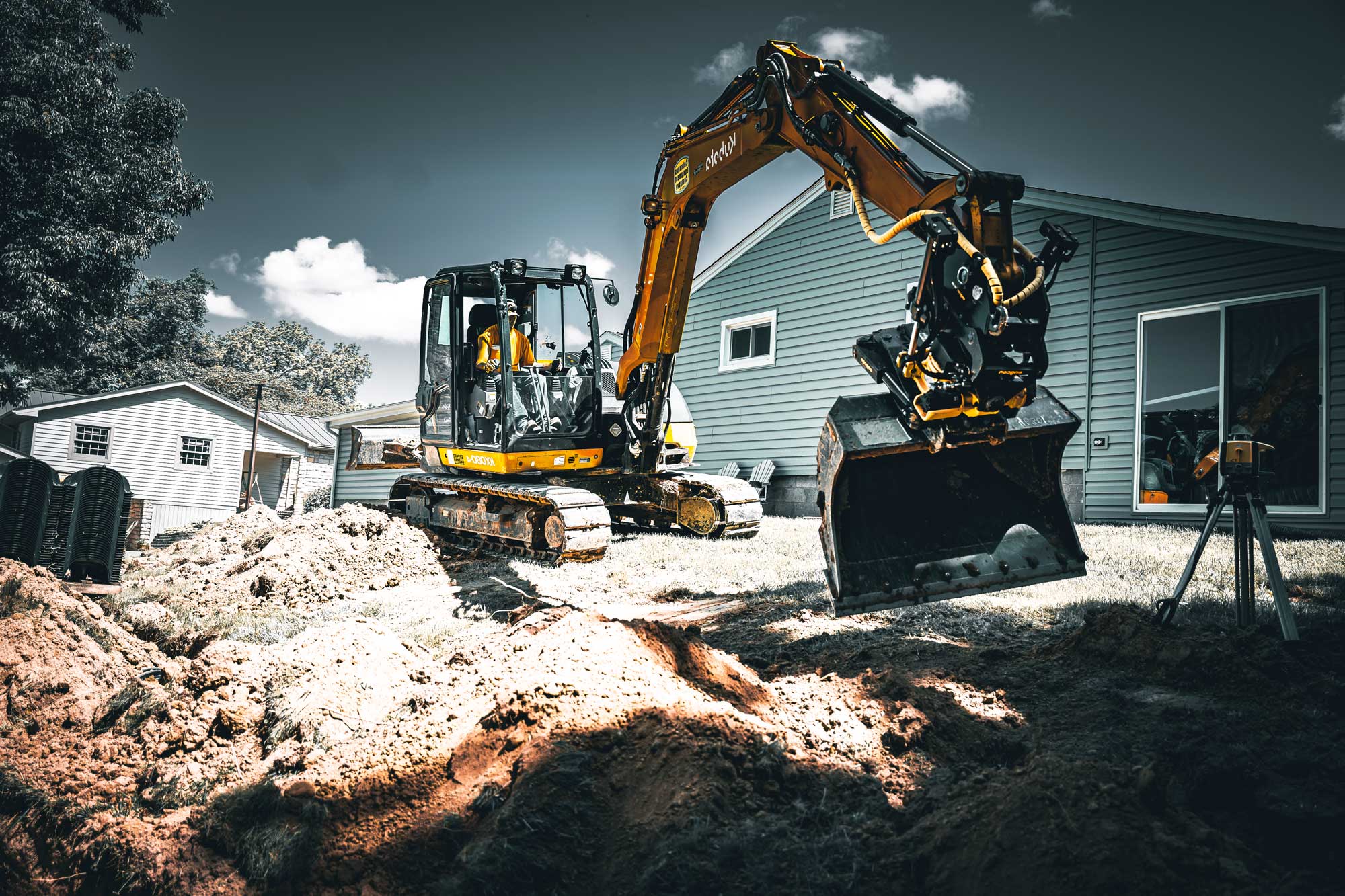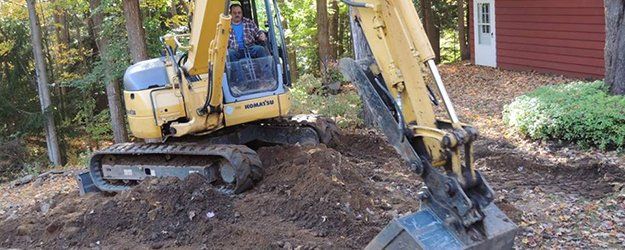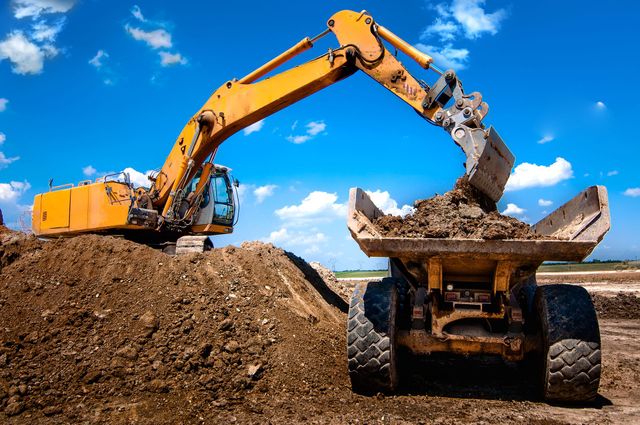Excavating Ohio - Leading Excavation Service Providers for Ohio Projects
Excavating Ohio - Leading Excavation Service Providers for Ohio Projects
Blog Article
Comprehensive Exploration: The Science Behind Superior Excavation Practices
The realm of excavation practices is a domain where science links with workmanship to uncover the enigmas concealed under the earth's surface. From ancient hand devices to contemporary hydraulic excavators, the evolution of excavation techniques has been a testimony to human ingenuity and technological innovations. However, what really sets remarkable excavation techniques apart is a deep understanding of geological concepts, paired with the application of sophisticated devices and methodologies. By discovering the scientific research behind these techniques, we can discover the tricks that lie below our feet and value the precision and expertise that go right into every dig.
Development of Excavation Techniques
Throughout background, the evolution of excavation strategies has played a crucial role in progressing building practices and archaeological discoveries. From the primary devices made use of by our ancestors to the sophisticated equipment employed in modern times, the development of excavation methods has dramatically transformed just how we approach numerous jobs.
In old times, manual work with basic tools such as shovels, wheelbarrows, and pickaxes was the key technique of excavation. This labor-intensive procedure limited the deepness and extent of excavations, commonly resulting in sluggish progression and limited accessibility to particular websites. However, as human beings advanced, so did the devices and techniques made use of for excavation.
The Industrial Change marked a transforming factor in excavation exercise with the introduction of steam-powered equipment. This development reinvented the area, permitting faster and more substantial excavations. In modern times, technology plays a critical duty in excavation, with innovations like GPS systems, drones, and 3D scanning improving accuracy and performance in the field. The evolution of excavation techniques continues to shape the means we build, check out, and recognize the world around us.
Role of Technology in Excavation

The integration of cutting-edge modern technology has fundamentally revolutionized the area of excavation, improving precision and efficiency to extraordinary degrees. One of the essential technological innovations that has actually substantially impacted excavation techniques is the use of general practitioner systems. These systems enable for accurate mapping of excavation websites, allowing operators to properly find below ground energies and structures. Additionally, making use of telematics in excavation equipment has actually allowed real-time monitoring of maker performance, leading to aggressive maintenance and raised operational performance.
Furthermore, the development of 3D modeling and simulation software has streamlined the preparation procedure for excavation tasks. Drivers and engineers can currently visualize the entire excavation procedure prior to damaging ground, optimizing and determining possible challenges process. Along with this, the execution of drones in excavation activities has assisted in airborne studies, volumetric dimensions, and site examinations with unmatched speed and accuracy.
Geological Principles in Excavation
An understanding of geological principles is necessary for making sure the structural honesty and security of excavation websites. Geological elements play a critical duty in determining the expediency and safety and security of excavation tasks.
Additionally, the geological structure of the location, including mistakes, fractures, and rock developments, need to be meticulously assessed to recognize prospective threats and difficulties. Excavating near geological fault or unstable rock developments can cause instability and prospective threats. By carrying out comprehensive geological surveys and evaluation, engineers and excavators can develop approaches to reduce threats and guarantee the effective completion of excavation jobs. Ultimately, integrating geological principles right into excavation practices is critical for achieving secure, efficient, and sustainable outcomes.

Most Current Tools for Excavation
In the world of excavation methods, contemporary innovations in tools have revolutionized the performance and accuracy of excavation processes. These drones can provide thorough aerial studies of excavation websites, using real-time data on topography and possible dangers.
One more cutting-edge device getting popularity is the execution of 3D printing modern technology for developing customized excavation tools. This enables the production of specialized devices that are tailored to the details demands of a task, boosting effectiveness and lowering downtime.
Moreover, advancements in materials science have actually resulted in the growth of stronger and extra resilient excavation devices. lancaster trenching. Tungsten carbide-tipped excavator attachments, for instance, deal superior performance in difficult ground problems, improving performance on-site
Science's Effect on Excavation Practices

Additionally, developments in products scientific research have resulted in the creation of more powerful, much more resilient excavation devices and devices. The usage of composite materials in diggers and shovels has actually improved their efficiency and durability, ultimately boosting productivity on excavation websites. Additionally, clinical research on dirt auto mechanics and geotechnical design has given useful understandings into dirt behavior, permitting excavation experts to make enlightened decisions regarding excavation techniques and dirt stabilization methods. Overall, scientific research remains to drive advancement and improvement in excavation methods, making excavation projects much more reliable, affordable, and lasting.

Conclusion
Finally, the advancement of excavation strategies has been substantially affected by innovations in innovation and a deeper understanding of geological principles. The most recent devices and devices used in excavation have actually enhanced performance and accuracy in the field. The application of clinical understanding has significantly boosted excavation methods, resulting in extra reliable and lasting Read Full Article techniques for digging deep into different kinds of products.
In the world of excavation methods, view it modern advancements in tools have actually revolutionized the efficiency and accuracy of excavation procedures. By leveraging clinical principles, the excavation industry has actually been able to dramatically boost effectiveness, accuracy, and safety in excavation procedures. GPR enables excavation teams to non-invasively scan and map subsurface frameworks, energies, and possible dangers, enabling them to intend excavation tasks with higher precision and lowered threat of mishaps.
Furthermore, scientific study on soil mechanics and geotechnical design has provided beneficial insights into dirt habits, visit their website allowing excavation specialists to make educated decisions regarding excavation techniques and soil stablizing techniques. On the whole, scientific research continues to drive innovation and renovation in excavation practices, making excavation tasks much more reliable, economical, and lasting.
Report this page